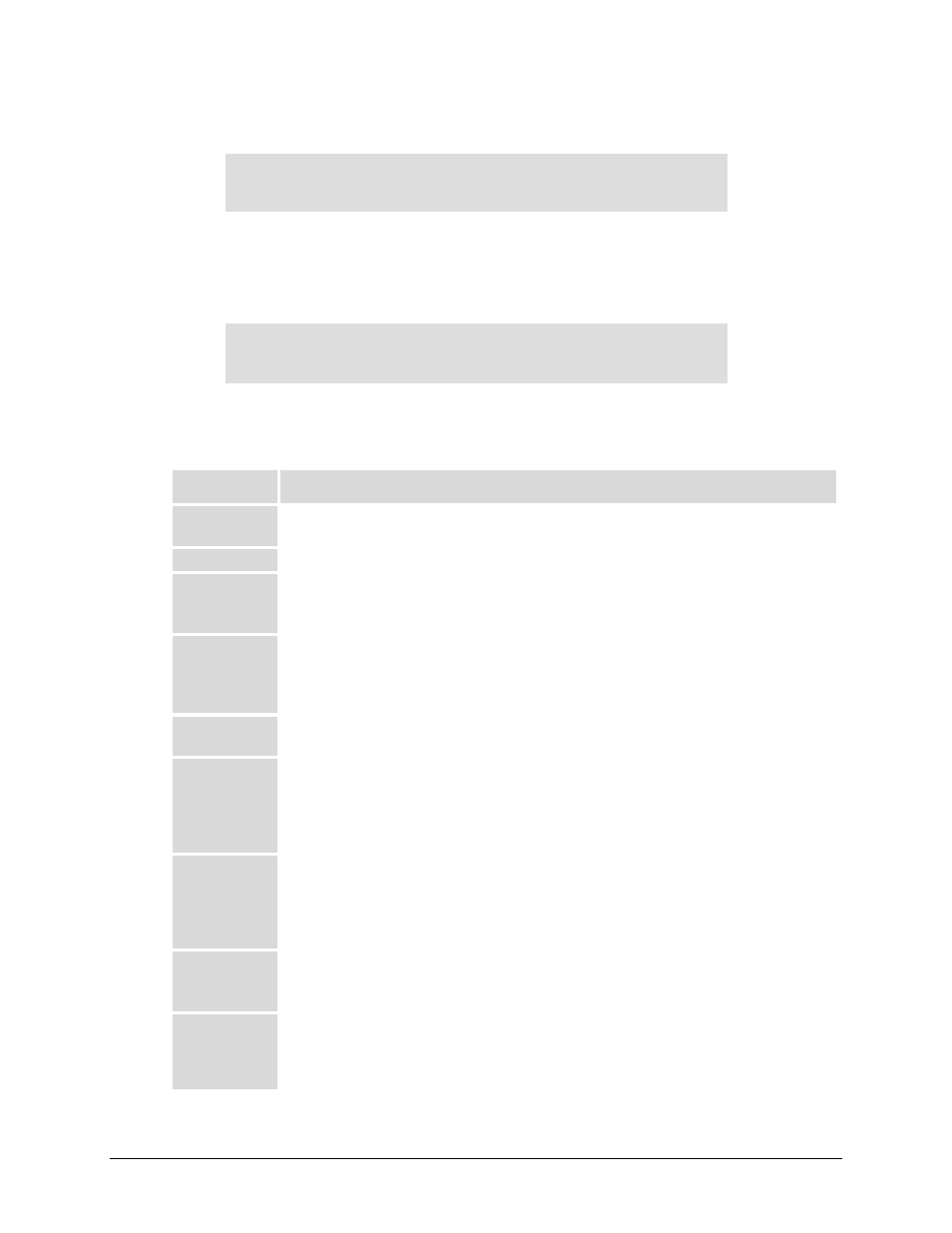3 select: test, 1 test: mode – Comtech EF Data CDM-750 User Manual
Page 119

CDM-750 Advanced High-Speed Trunking Modem
Revision 2
Front Panel Operation
MN-CDM750
5–41
5.2.3 SELECT: Test
TEST: Mode BERT Comp
(
34)
Use the W X arrow keys to select Mode, BERT, or Comp, and then press ENTER.
5.2.3.1 TEST: Mode
Modem Test Mode = Normal
(
v)
(Norm,Tx-CW,DSB,SSB,IQ2PN,2F,IF2Dig,2/0)
Use the STarrow keys to select Normal modem operation or to select an available Test Mode,
and then press ENTER to execute. Available selections are as follows:
Selection
Description
Norm
(Normal) This clears any test modes or loopbacks, and places the unit back into an operational
state.
Tx-CW (Transmit
CW) This mode forces the modulator to transmit a pure carrier (unmodulated).
DSB
(Dual Side Band) This mode should not be enabled over the satellite.
Two carriers on both sides of the nominal center Tx Frequency, whose frequency difference is
equal to the configured Tx symbol rate.
SSB
(Single Side Band) This mode should not be enabled over the satellite.
This mode demonstrates the modulator’s carrier null, amplitude, and phase balance. A single
carrier on one side of the nominal center Tx frequency, offset from the nominal carrier frequency
by half of the configured symbol rate.
IQ2PN
This mode transmits random unframed data to the Nyquist filters. Use this to measure spectral
mask as there is no correlation due to framing or terrestrial data patterns.
2
IF
(IF Loopback) This mode invokes an internal IF loop. It is a particularly useful test in that it
permits the user to perform a quick diagnostic test without having to disturb external cabling.
Furthermore, all receive configuration parameters are temporarily changed to match those of
the transmit side. When Normal is again selected, all previous values are restored. See Figure
5-2 for the flow diagram for this test.
2
F
(RF Loopback) Use this mode to perform a satellite loopback. It is almost identical to the IF
loop mode, except that all of the receive configuration parameters (except Rx Spectrum Invert)
are temporarily changed to match those of the transmit side. However, no internal connection is
made. When Normal is again selected, all previous values are restored. See Figure 5-2 for the
flow diagram for this test.
IF2Dig
(Digital Loopback) This mode tests the entire interface, transmit baseband circuits, and buffer.
It invokes a digital loopback, which loops data at the output of the framer on the transmit side
back into the framer on the receive side. See Figure 5-2 for the flow diagram for this test.
2
/O
(Inward/Outward Loopback) This mode invokes two distinct loopbacks: The first is the inward
loop, which takes data being received from the satellite direction and passes it directly to the
modulator. Simultaneously, the outward loop is invoked, whereby data being fed to the transmit
data interface is routed directly back out of the receive data interface.